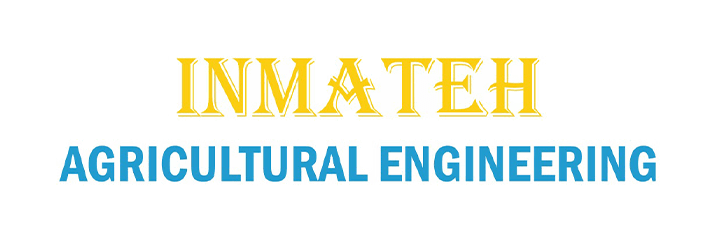DESIGN AND TESTING OF BIONIC WINGED DEEP-LOOSENING SHOVEL FOR A STRIP TILLAGE DEEP-LOOSENING FERTILIZATION MACHINE
条带少耕深松施肥机带翼式深松铲仿生铲翼研究
DOI : https://doi.org/10.35633/inmateh-77-45
Authors
Abstract
To address the issues of high operating resistance and insufficient soil-loosening performance encountered by winged deep-loosening shovels in strip-tillage fertilization machines, a bionic optimization design for the shovel wing was carried out based on a medium-sized winged deep-loosening shovel. A mechanical contact model between the shovel wing and soil was established to analyze the forces acting on the wing and the soil above it, as well as the soil disturbance characteristics induced by the wing. Following the principles of bionics, the head morphology of the hammerhead shark was extracted and used to derive a characteristic geometric equation, which was then applied to the bionic redesign of the shovel wing. Using discrete element simulation technology, a deep-loosening shovel-soil interaction model was constructed. Comparative experiments on wings of different shapes showed that the bionic-optimized wing reduces operating resistance and increases soil disturbance area compared with the conventional wing. Simulation results indicated that the bionic wing achieved an average soil disturbance area of 1635.63 cm² and an average operating resistance of 1143.76 N. Finally, bench validation tests were conducted, demonstrating an average actual soil disturbance area of 1648.20 cm² and an average actual operating resistance of 1102.01 N, results which fall within the allowable error range. Therefore, the bionic shovel wing meets the operational requirements.
Abstract in Chinese





